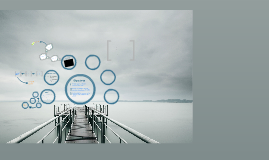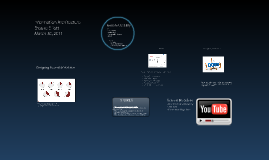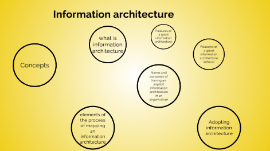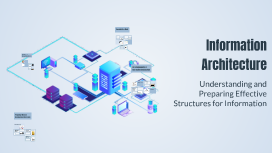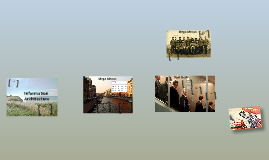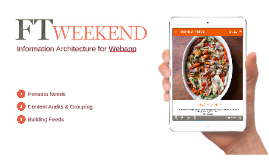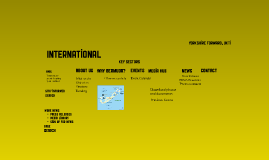Information Architecture
Transcript: Example Case Study Application of Information Architecture Overview of the Case Study The redesigned site incorporated hierarchical organization for product categories, enhanced labeling for better clarity, and an intuitive navigation menu. User testing confirmed these changes enhanced overall usability and satisfaction. This case study focuses on an e-commerce website redesign aimed at improving user navigation and content discovery. The primary goal was to create a more intuitive user experience that aligns with customer needs and behaviors. Outcomes and Lessons Learned Visual Representation Post-launch analytics indicated a 30% increase in user engagement and a 25% reduction in bounce rates. Key lessons include the significance of user feedback in shaping the architecture and the need for adaptability in design strategies. Flowcharts depicting user paths and decision points were created to visualize the user journey. Graphs showing engagement metrics before and after the redesign provided compelling evidence of the success of the new Information Architecture. Key Insights Effective Information Architecture must prioritize user experience and accessibility. Continuous assessment and iterative design processes are crucial for achieving optimal outcomes in any web project. Information Architecture Introduction to Information Architecture Definition of Information Architecture Information Architecture (IA) refers to the practice of organizing, structuring, and labeling content effectively. Its main goal is to help users find information and complete tasks in a digital environment, influencing usability and user satisfaction. Key Principles of Information Architecture Importance of Information Architecture The core principles of IA include organization, labeling, navigation, and search. Proper application of these principles ensures that users can intuitively navigate content, find information efficiently, and have a positive experience on the website or application. IA is vital as it directly impacts user experience, search engine optimization, and content discoverability. A well-structured IA can streamline the user journey, reducing frustration and enhancing engagement with content. Benefits for Users and Organizations Core Components of Information Architecture Effective IA benefits users by simplifying navigation and improving content findability. For organizations, it enhances brand perception, drives user satisfaction, and can lead to increased conversion rates and lower customer support costs. Labeling Systems Organization Systems Organization systems structure content in a way that makes it easy for users to find and understand. These can be hierarchical, sequential, or matrix-based, helping to prioritize and categorize information effectively. Labeling systems assign meaningful titles and descriptors to content, making navigation intuitive. Effective labels communicate the purpose of information clearly, aiding users in locating specific resources or functionalities. Navigation Systems Search Systems Search systems enhance information retrieval, allowing users to input queries and receive relevant results. Incorporating advanced filters and algorithms improves search accuracy, making it easier for users to discover content quickly. Navigation systems guide users through content efficiently, utilizing menus, links, and breadcrumbs. A well-designed navigation system is crucial for providing a seamless and enjoyable user experience, enabling quick access to desired information. Understanding and Preparing Effective Structures for Information Preparing Effective Information Architecture Research and User Analysis Conducting research involves understanding user needs, preferences, and behaviors. Effective user analysis helps identify target audiences and informs design decisions, ensuring that the information architecture aligns with user expectations and facilitates intuitive navigation. Creating User Personas Developing Content Strategy User personas are fictional representations of key audience segments based on research findings. These personas guide design choices and help prioritize features, making it easier to tailor content to meet the specific needs of different user groups. A well-defined content strategy ensures that all information is organized, relevant, and accessible. This strategy should outline content types, tone, and structure, focusing on delivering value to users while maintaining alignment with business goals. Wireframing and Prototyping Wireframing creates a visual blueprint for the information architecture, focusing on layout and interaction design. Prototyping allows for testing and feedback, enabling iterative improvements that refine the user experience before full development.






